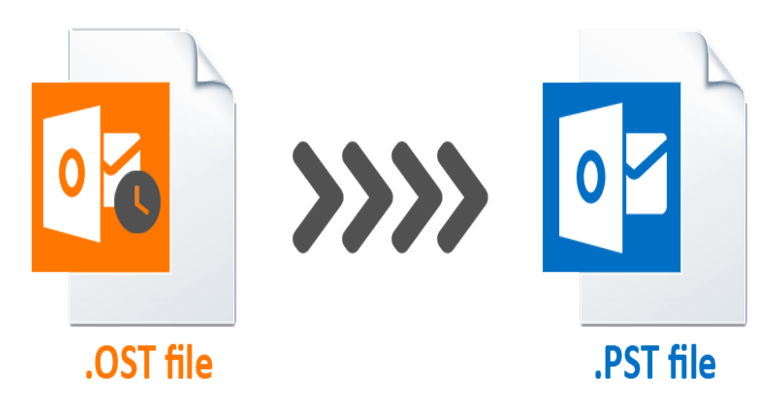Error has been Detected in Outlook Data File Ι Solved using Two Free Methods

The OST and PST database files are used by the Outlook application. The PST file stores all Outlook mail flow information on the system hard disc, but the OST file is an identical reproduction of Exchange Server data that is saved as a local copy on the user’s workstation. It is kept up to date in order to preserve Exchange data for offline use. Users can access Exchange Server mailboxes data in Outlook in offline mode using an OST file, but there are some circumstances like an error has been detected in the Outlook data file. it requires users to convert OST to PST using Expertise techniques. We’ve listed a few scenarios where changing your OST file to PST format can be beneficial for accessing Exchange data.
- Due to corruption or other factors, Exchange Server crashed.
- The Exchange Server is being serviced.
- Exchange data loss or deletion by accident
- Changing from one system or operating system to another
- OST data must be backed up on a permanent and portable basis.
- Regulations and compliance for a company or organization
The OST file content is unaffected by any ill effects to Exchange Server, such as damage, inaccessibility, data deletion, and so on, because the connection to Exchange is also lost at that time, and the OST file content can be retrieved as a fresh updated copy as soon as the Exchange Server is configured again. As a result, users can convert an OST file to a PST file in order to view Exchange mailbox data directly in the Outlook application, but some technical knowledge is required.
Free Exchange OST to Outlook PST File Conversion
You may convert an OST file to a PST file or migrate OST data to a PST file using one of two popular free options.
- Archiving OST data to PST file
- Using the export feature in Outlook
Note: If the data you want to retrieve from an OST file is little, such as a few emails or a large number of emails with documents in a zip folder, you can forward them as emails to any email address. If there are only a few emails, dragging and dropping OST emails to the freshly formed PST file (New Items>More Items>Outlook Data File in the Outlook interface) is also an option.
A. Converting OST Emails to PST.
Emails take up the most space in your mailbox. There are inboxes, outboxes, sent items, and other user-defined folders for storing emails safely. In addition, attachments, photos, and other animations in the email body can significantly increase the size of a single email. Because the size of an OST file is restricted, Outlook provides an easy way to move emails that are no longer usable in the inbox or sent items to an OST file.
However, the user must actively enable auto-archiving. The archiving will begin immediately after you select the time period and save the folder.
- In Outlook, go to the File menu and select Options.
- Select AutoArchive options from the Advanced category.
- By default, the wizard is turned off. As a result, you should check the box to have AutoArchive run after each selected day. Choose the number of days you want to use. AutoArchive can erase items that have expired (emails only), archive or delete old items, and wipe away items that are older than a certain number of months. You have the option of moving old items to a specific folder or permanently deleting them. Use all of the options and then click OK.
- A PST file will be used as the archive file. However, you should be aware that the archive file will only save emails. Other ways should be used if you want to save contacts and other information.
B. Using Outlook’s Export Function
All versions of Outlook have an in-built Import and Export capability that allows users to effortlessly solve this issue error has been detected in Outlook data files by migrating data from OST files to PST files. The essential need is that the OST file is connected to Exchange Server at the time of export. It comes in handy when a user needs to make a local and portable backup of his or her Exchange mailboxes. Let’s have a look at the procedure.
- Start the Outlook program. Import/Export may be found under File>Open & Export>Import/Export.
- Click Next after selecting the option to export to a file.
- It will then ask you what file type you wish to save the OST data to. Choose Outlook Data File (.pst) from the drop-down menu. Next should be selected.
- A single mailbox folder (usually the Inbox folder) can be moved to PST. Select your option and then tick the box that says Include subfolders. Then, to proceed, click Next.
- Select Browse and type the path of the PST file on your computer. Select an option for dealing with duplicate items and then click Finish.
- The password can then be added to your stored PST file or you can proceed without it. The conversion procedure will begin and end according to the data involved.
Conclusion
Many cases need the conversion of an Exchange OST file to an Outlook PST file, such as when an error has been detected in Outlook data File or backup is required, when Exchange is unavailable or has failed, and so on. This article explains free methods such as archiving and exporting OST data to PST files, as well as a suggestion for a full-proof automated OST to PST converter solution at the end.




